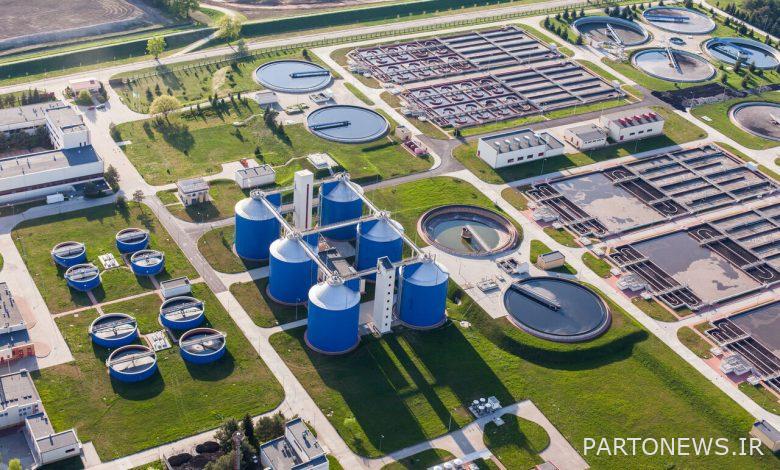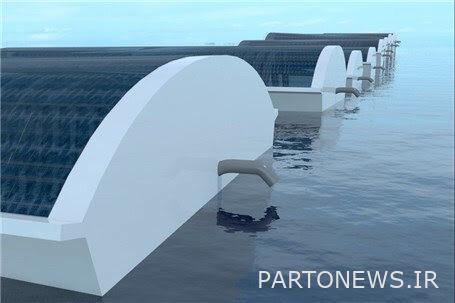What do others do with the water crisis?

The Middle East and the Persian Gulf region may be among the driest and driest countries in the world; An area that has problems even in the area of underground resources. In this case, Kuwait can be used as an example that in terms of surface and underground resources, the country’s assets are calculated at zero.
However, over the past few decades, the countries of the southern Persian Gulf have first adopted various water supply routes for drinking purposes, the most important of which has been the use of offshore and ocean water, and then other methods such as wastewater treatment and fertilization projects. Experience the clouds.
Emirates
The countries of the Persian Gulf have invested heavily in extracting open water and converting saline ocean water into fresh water, so much so that today the UAE, in the driest geography of the world, has become a water exporter. It is interesting to know that there is no river in the UAE and it rains only 10 days a year and even 90% of the country’s groundwater is salty and unusable.
The UAE, which has invested more than $ 1 billion in this field alone in 1997, has moved beyond fossil fuel-based conversion technology, especially in the industrial sector, to energy technologies. The sun is moving.
The UAE has more than 26 million gallons of water a day in the desert hills of Liwa, which is said to be the world’s largest freshwater reservoir, and its freshwater reserves are equal to its oil reserves. In some reports, it is mentioned that this country alone desalifies 30 million tons of Persian Gulf water per day and Jabal Ali desalination complex is one of the most important units for converting seawater into drinking water in this country.
Saudi Arabia
Saudi Arabia, which is naturally a completely dry and waterless land, is currently carrying out ambitious projects known as dams. Therefore, it is one of the largest producers of water through desalination of seas and oceans.
The country has more than 27 confectionery factories and complexes in the Persian Gulf and the Red Sea, which provide more than 90% of domestic and industrial consumption in this country.
In 1997, the country began construction of a desalination plant using solar energy and the reverse osmosis method at a cost of only $ 140 million, unlike water-rich countries that have lost their forests due to the drought crisis. The area of their deserts will increase, making their deserts forested.
On the other hand, now that the Saudis have stepped in to implement the ultra-modern Neom project, a metropolis in the heart of the Saudi desert, the fundamental question is, where will this project get its water from? During this project, a city called “Delaine” called “Linear City” is to be built with a length of 170 km and a cost of $ 200 billion, and the answer to the water requirement of this project, considering the location of this area in The Red Sea coast near the port of Aqaba is not difficult.
Kuwait
Among the countries of the Persian Gulf, Kuwait is in a worse situation in terms of water resources. The country, which is said to be close to zero in terms of water resources, now supplies up to 90 percent of its water through desalination complexes from the Persian Gulf. Kuwait, with a population of 4 million and an area of 18,000 square kilometers, has no water resources, and according to the World Bank in 2013, the country’s renewable domestic water resources were close to zero, but interestingly, the country is facing a water shortage or water shortage crisis. is not.
Oman and Qatar
Oman and Qatar also derive almost 90% of their water needs from the Persian Gulf, so that in the case of the GCC countries, which have 43% of the world’s desalination plants, 22 million cubic meters of water per day in this area. Sweeten the blue.
Other methods
In connection with the issue of water, the countries of the Persian Gulf have not only been satisfied with the system and method of desalination of the waters of the seas and oceans, but have also put other ways on the agenda; Including wastewater treatment, for which the Emirati people have a long-term plan with a 2030 deadline.

While the project is not yet in the final stages, Emirati people use a large portion of the water used for green spaces, parks and landscapes, and it is expected to cover all such uses by 2030.
Another method of exploitation is the use of nuclear and solar technologies in water desalination, which the countries of the Persian Gulf have been investing in for several years.
Finally, the method of cloud seeding is being invested and experienced by the countries of the Persian Gulf, especially the UAE and Qatar. Metal is used in cloud seeding operations.
Water production schemes in various ways have both environmental consequences and implications and are seemingly costly and may not be economical, yet in the long run, these methods are both necessary and inexpensive, because Environmental damage to water abstraction from natural resources has various dimensions; Both social, economic and security. This is the reason why the countries of the Persian Gulf have concentrated the most investment in this sector, and in the absence of Iran, like the extraction of gas from joint wells, they cut off water with all their might.
In addition, landlocked countries and oceans have the chance to meet their water needs through easy means such as desalination, while landlocked countries are deprived of this privilege.
In most countries of the world, which have a serious presence in agriculture, patterns such as flooding are obsolete, and pressure and drip irrigation and even new systems using nanotechnology have been replaced, in addition to exploiting more rainfall and Surface water is taken seriously by watershed management and aquifer systems. In the countries of the region, despite the lack of running water, but the aquifer system is also planned to collect low rainfall, so that the UAE stores and exploits water from artificial rain by creating artificial ponds and lakes. .
.

